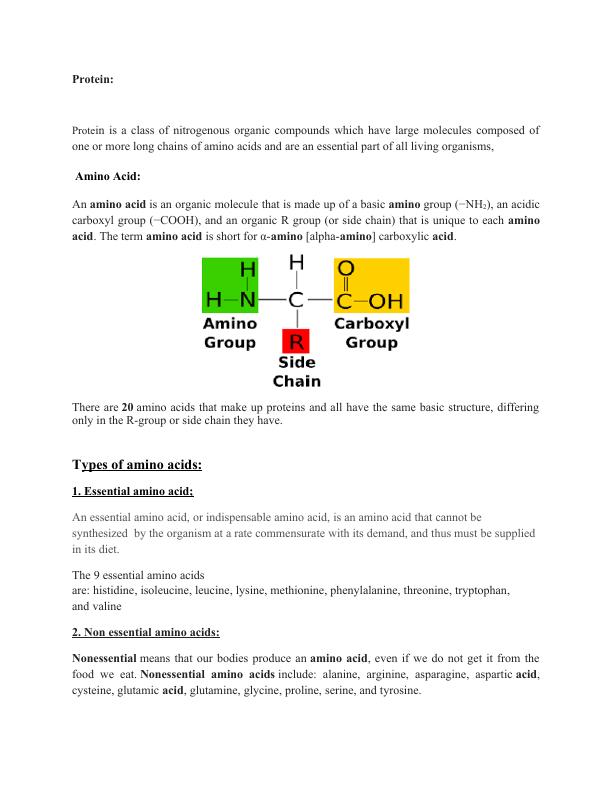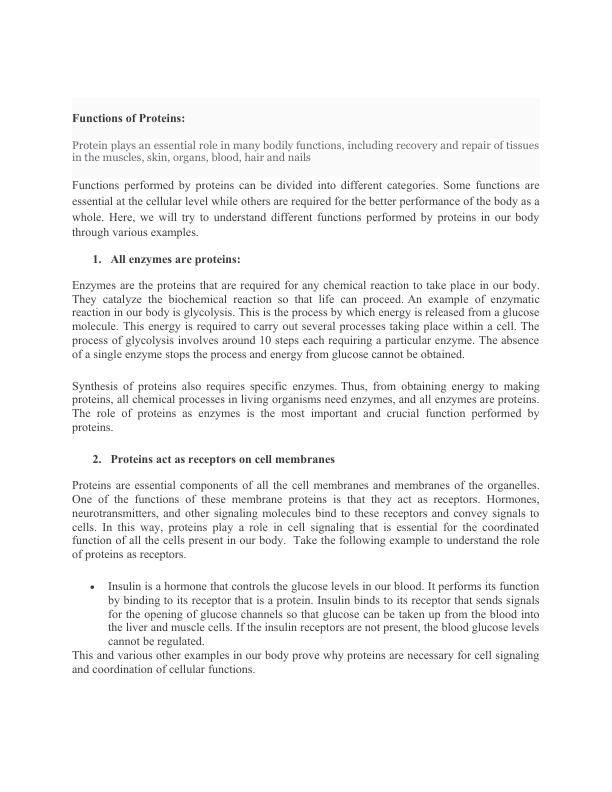Ask a question from expert
Amino Acid: A Class of Organic Molecules Composed of 20 Amino Acids
5 Pages1457 Words418 Views
Added on 2022-01-20
About This Document
Protein: Protein is a class of nitrogenous organic compounds which have large molecules composed of one or more long chains of amino acids and are an essential part of all living organisms, Amino Acid: An amino acid is an organic molecule that is made up of a basic amino group (NH2), an acidic carboxyl group (COOH), and an organic R group (or side chain) that is unique to each amino acid. Essential amino acid; An essential amino acid, or indispensable amino
Amino Acid: A Class of Organic Molecules Composed of 20 Amino Acids
Added on 2022-01-20
BookmarkShareRelated Documents
End of preview
Want to access all the pages? Upload your documents or become a member.
Proteins: Structure, Amino Acids, and Machine Learning
|10
|2711
|447
The glucose molecule is catabolised into water
|6
|1348
|26
Biomolecules: Carbohydrates, Lipids, Proteins, Nucleic Acids
|5
|931
|280
Medical Chemistry Study Material
|13
|2857
|1
Chemistry and Biochemistry – BIOB111
|11
|1544
|260
Human Biology Study Material
|10
|2325
|59

